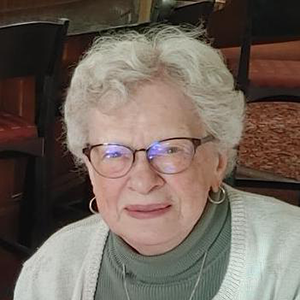
February 9thGROUNDHOG DAY OR CANDLEMAS?
The Christian Church has never made much fuss over “Groundhog Day”. Can the behaviour of a seldom seen furry animal actually tell us what the weather will be like for the next 6 weeks? Most of us forget the “prediction” within a week – or a day. Even secular newspapers don’t consistently mention it. Neither have the Mennonite churches of which I have been a part paid much attention to another, more meaningful, tradition that comes on the same day: Candlemas.
I’ve long known that the celebration of Christmas in the Christian Church did not end on December 26 (known in the past as the “second holiday”, followed in my home church by the “third holiday”, also worthy of a worship service). Following that, most of the churches in which I have worshipped have at least acknowledged Epiphany – or, as we said in German, “Heilige Drei Koenige”, roughly translated, “The Three Holy Kings”- which is, in fact, “The Twelfth Day of Christmas”. After that, decorations need to be taken down, and we focus on making it through a dark, rugged winter.
But wait, in some years we are reminded that Jesus was taken to the temple after 8 days to be circumcised and named. His parents further followed Jewish law in a more formal trip to the temple in Jerusalem - now only a reasonable travel distance away, if they are still in Bethlehem - for the purification of the parents, as well as to dedicate their first-born son to God. Again they are faithfully fulfilling Jewish law, which says, as Luke quotes from Exodus 34:19, “… every first born male shall be designated as holy to the Lord” (Luke 2:23). The correct timing for this journey was 40 days after the birth, which on our calendar happens to be February 2.
On this trip to the temple, three things were of great significance: first, the presentation of Jesus in the temple; in essence, God in human form, actually being present in the temple; second, the interaction with Simeon, who makes some deeply focused predictions regarding Jesus’ impact on this world; third, the interaction with Anna, who “began to speak about the child” to all she met. Both gave witness to the divinity of Jesus, and the fulfillment of prophecy. Aging Simeon, ready to die, now that he has seen the Babe, takes the child in his arms and praises God, saying, “…my eyes have seen your salvation, which you have prepared in the presence of all peoples, a light for revelation to the Gentiles, and for glory to your people Israel” (Luke 2:30 – 32).
Already early in the 4th century, the Christian Church took note of this historic event and the words of Simeon and Anna, to institute the Feast of Candlemas (or Candle-mass), a celebration of light and hope. “Candlemas,” says one writer, “is the day we realize that eternity can come into time, and touch us in the form of a tiny child … not as a transcendent overlord, but as a vulnerable pilgrim, coming in his love to walk the road of life alongside us.” Throughout the centuries this event has been celebrated in a variety of ways. It became the custom of the church to light one central candle and bring it to the altar to represent the Christ-light. There was then a prayer of blessing over all the candles in the church. In later years people came to church with their own candles, which were then blessed by the priest. In more recent years, the priest hands out candles already blessed, attempting to predict the length of time the cold and darkness of winter will yet persist, by the variations in lengths of the candles in different years. What is worth celebrating each year is that the days will become longer, and both light and warmth increase. Yes, the Light shines despite cold, dark winters!
Wiarton Willie (ON) and Balzac Billy (AB) – though I hear he is a fake - provide a fun diversion in the darkness of an often dreary season, though with little credence for an authentic prediction of the future. True, they do not shrink back from the light itself, but from the frightening shadow of themselves cast by the light. In most years they encourage us to wrap ourselves in our woolies and carry on.
Candlemas suggests ultimate hope, brought by a light that cannot be quenched, strengthening our courage in the face of whatever adversity we may encounter ahead of us. The light of Christ’s presence will go with us in all the challenges and joys of life in this world. Until this wintery date on our calendars, we can maintain the celebrative spirit by keeping decorations up and finishing frozen Christmas baking. Rereading Christmas cards and special e-mail messages from friends and relatives can help us continue to savour the conviction that God is still with us and will never leave us. No darkness can ever put out the Light.